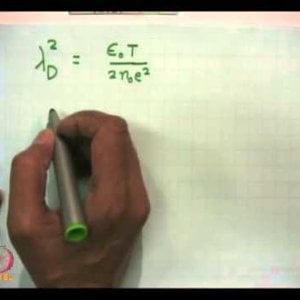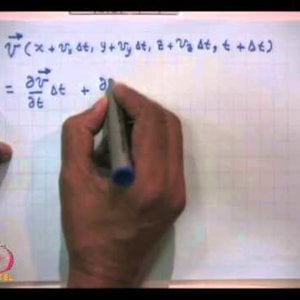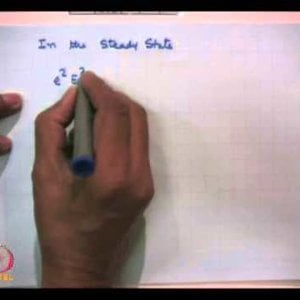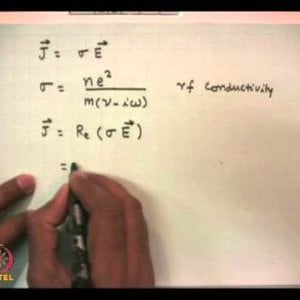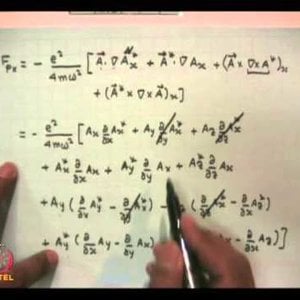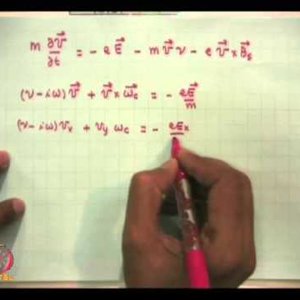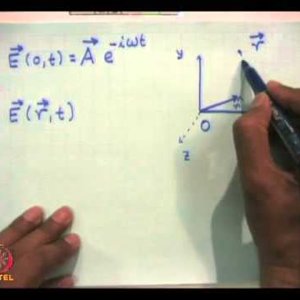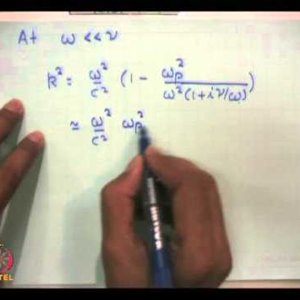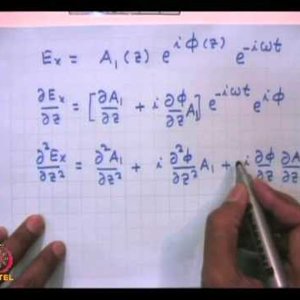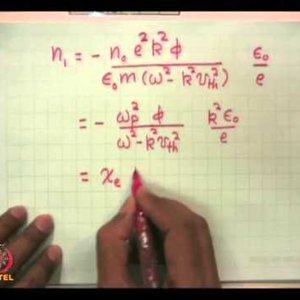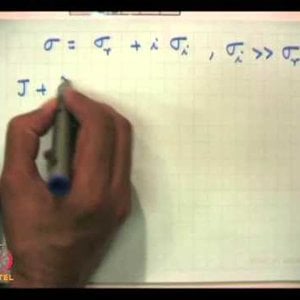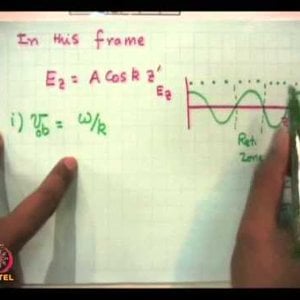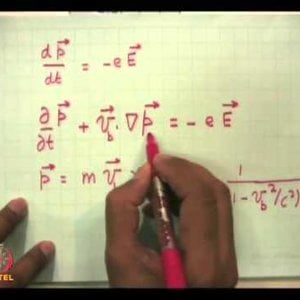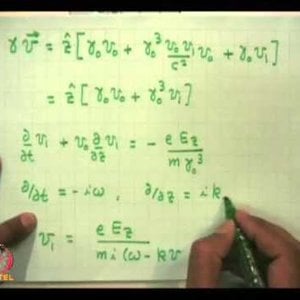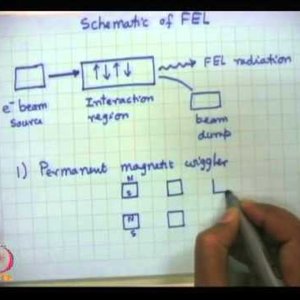Plasma physics Definition and 167 Threads
-
R
How many mSv of radiation would a bolt of ionized plasma deliver?
I'm a huge Star Wars fan and it just occurred to me, that the ion weapons used to disable droids, ships and other electronics would cause serious harm as well, to living beings, if they got accidentally hit by a bolt. Ionized radiation can give a person cancer, and the amount of microsieverts to...- Razorback Gorilla
- Thread
- Cancer Ionisation energy Plasma physics Radiation Star wars
- Replies: 6
- Forum: Science Fiction and Fantasy Media
-

Admissions What is my chance of getting accepted to Princeton Plasma for PhD?
I got accepted to do a SULI at PPPL this summer. How much of an advantage is this for applying to the Plasma PhD at Princeton? Here are some other relevant stats: I did another summer REU researching experimental laboratory plasmas at a known plasma institution 3.98 GPA—- from a small R2...- emmalandefeld
- Thread
- Grad school application Plasma physics
- Replies: 1
- Forum: STEM Academic Advising
-

Admissions Plasma Physics PhD from an EE undergrad
Hello everyone, I’m an EE undergrad in their junior year looking to make a move into Physics. Although this isn’t set in stone, I’m going to try to apply for experimental physics programs in EE adjacent fields such as optics or plasma. This summer, I’m going to self study a few physics classes...- asmundd
- Thread
- Electrical engineer Phd admission Plasma physics
- Replies: 4
- Forum: STEM Academic Advising
-
J
Undergrad MagLIF Magnetic Field Hypothesis
Hello everyone, This is my first post on this platform, I'm excited to be a part of this community! I'm currently doing a research project on Nuclear Fusion, and have been recently introduced to the concept of Magnetized Linear Inertial Fusion (MagLIF). I'm still new to the topic of...- Jellofish18
- Thread
- Magnetic field Magnetohydrodynamics Nuclear fusion Plasma Plasma physics
- Replies: 2
- Forum: High Energy, Nuclear, Particle Physics
-

Admissions Admission into Princeton Grad School
Hi Guys! I'm a student studying undergrad Sophomore, pursuing Honors B.S. in Physics and Applied Math. I have been looking up Princeton Program in Plasma Physics (PPPL) and got very interested in their research in nuclear fusion. Any advice on how to get good/prepared enough to have high odds of...- DeltaHong
- Thread
- advice Grad school application Phyiscs Plasma physics Princeton
- Replies: 9
- Forum: STEM Academic Advising
-

Undergrad Derivation of "polarization drift" in a plasma
When studying a particle in slowly time varying, uniform electric field E, and in a constant, uniform magnetic field \textbf{B}, I found many texts where I can't understand the derivation of the "polarization drift" \textbf{v}_p, in particular I quote as reference this book I found online ([1]...- Axel Togawa
- Thread
- Differential equation Plasma physics
- Replies: 3
- Forum: Quantum Physics
-

Undergrad How to Calculate electron temperature of Arc Plasma?
I am trying to calculate the spitzer resistivity of an arc discharge plasma and I have not been able to figure out how to calculate electron temperature (Te). What is the formula / method of getting this value? How does electron temperature vary in relation to current and voltage moving through...- akansh_karthik_1
- Thread
- Plasma physics
- Replies: 2
- Forum: High Energy, Nuclear, Particle Physics
-

Graduate Relation between Rosenbluth Potentials and Spitzer Resistivity
I know that Spitzer derived the conductivity of plasma in his famous 1952 paper. I just wonder if this result can be derived by Rosenblith potentials because they both encouner solving Boltzmann equation and carefullt treating the collisional term.- gaiussheh
- Thread
- Kinetic theory Plasma physics
- Replies: 0
- Forum: Other Physics Topics
-
S
Graduate Saha Equation In Plasma for Muons
I am currently working on the determining the viability of muon-catalyzed fusion in a dense but tepid plasma and the first question pertains to the formation of muonic atoms once muons are injected into the plasma. Suppose the plasma is sufficiently dense such that pressure ionization ensures...- STZweig
- Thread
- Muons Nuclear fusion Plasma physics Stat mech
- Replies: 0
- Forum: Electromagnetism
-
F
Struggling With Plasma Physics Question
First, assuming, ##v \alpha e^{i(k{\pm}z - \omega t)}## I worked with the equation of motion to get: ##-i\omega v_x = -\frac{e}{m}E_x - \omega_c v_y## and ##-i\omega v_y = -\frac{e}{m}E_y + \omega_c v_x## Solving this system of equations, I end up with: ##v_x = \frac{-e}{m(\omega^2 -...- fizicksiscool
- Thread
- Plasma physics
- Replies: 9
- Forum: Advanced Physics Homework Help
-

Graduate Information for nitrogen spectra lines
I have Optical Emission Spectroscopy data on nitrogen's second positive system and first negative system. I would like to calculate the electron temperature using the line-ratio method, which is given as: $$k_b T_e = (E_2 - E_1) * ( ln( \frac{I_1 \lambda_1 g_2 A_2}{I_2 \lambda_2 g_1 A_1} )...- magic
- Thread
- Atomic physics Plasma physics
- Replies: 0
- Forum: Atomic and Condensed Matter
-

Graduate Combined diffusion coefficient for gas mixture
Hi. I am starting to do a gas mixture simulation. I learn the fundamentals from a paper. (doi: 10.1088/0022-3727/43/2/022001) For a gas mixture (Fe vapor in Argon), the mole fraction of Fe vapor is calculated by, and the diffusion flux JFe is given by, x_ar is the mole fraction of Argon; T is...- Snow_buggy
- Thread
- Plasma physics
- Replies: 1
- Forum: Thermodynamics
-
G
Navigating 21st Century: Transportation & Navigation
It was after listening to podcasts on Freeman Dyson two or three years ago that I was convinced that our best bet at Earth-Moon navigating was somewhere along the lines of a nuclear-chemical pulsed transmission. And I guess the subject matter leads itself into plasma physics somehow. (Funny...- Gear300
- Thread
- Plasma physics
- Replies: 14
- Forum: Computing and Technology
-

Graduate Plotting Potential in Plasma Sheath
Hi! everyone. I'm looking to plot potential of quasi-neutral plasma as a function of length. I know that plasma potential will drop at front of the wall from particle acceleration by electric field. I assume plasma is an electrostatic and cold (less collision). However, I'm trying to plot plasma...- niranama
- Thread
- Nuclear fusion Plasma Plasma physics
- Replies: 2
- Forum: Electromagnetism
-

High School Plasma recovery at wakefield accelerators
Is it possible to keep the plasma ionized almost indefinitely. No additional heating is required.- redirmigician
- Thread
- Accelerator Accelerator physics Plasma Plasma physics
- Replies: 1
- Forum: High Energy, Nuclear, Particle Physics
-

Schools What are some good science fair project ideas or resources?
I am currently a sophomore in HS, and I have a science fair project next year. I want to do something interesting- I don't want to put in barely any effort and do something that everyone has done, like 'growing plants in different light levels'. I would ideally like to do something with...- Someon332
- Thread
- Electromagetism Ideas Particle physics Plasma physics Project Project ideas Resources Science Science fair
- Replies: 5
- Forum: STEM Academic Advising
-
C
Graduate How making the ions leave the cavity in a ion sources
Ion sources are devices that allow creating ion beams (e.g. argon ions) and to project them outside the device, for example to be further processed by a particle accelerator, or to irradiate materials or biological tissues etc. The ions are usually created by a plasma inside a cavity filled...- coquelicot
- Thread
- Cathode ray tube Cavity Ion Ions Plasma physics Sources
- Replies: 3
- Forum: High Energy, Nuclear, Particle Physics
-

Graduate Question about kinetic theory and hydrodynamics (in plasmas)
It is usual, in plasma physics, to combine the kinetic description for electron fluid and the hydrodynamic description for ion fluid, when studying the plasma properties or the dynamics of the electrostatic waves. I am wondering what are the physical meaning and limits of such an approach. Thanks.- zaki belh
- Thread
- Hydrodynamics Kinetic Kinetic theory Plasma physics plasmas Theory
- Replies: 1
- Forum: Other Physics Topics
-
How to determine the minimum grid length | Numerical Plasma Physics
Summary:: I am learning particle-in-cell (PIC) python 3X code. PIC currently represents one of the most important plasma simulation tools. It is particularly suited to the study of kinetic or non-Maxwellian effects. I am learning particle-in-cell (PIC) python code. PIC currently represents one...- JD_PM
- Thread
- Grid Length Minimum Numerical Physics Plasma Plasma physics
- Replies: 7
- Forum: Advanced Physics Homework Help
-
T
Graduate Properties of Degenerate Electron Gas
Basically the thread title. For some background, I'm trying to model laser-material interactions, where I'm assuming that the laser is interacting with a free electron gas (copper). To model the interaction, I need to determine the properties of the electron gas, such as the heat capacity...- thepolishman
- Thread
- Electron Electron gas Gas Plasma physics Properties Solid state physics
- Replies: 5
- Forum: Atomic and Condensed Matter
-

Physics Internship possibilities: Plasma physics
Hi guys. I'm a third year physics student. Next year I'll be in my final year. I'm interested in studying fusion in the future. Unfortunately I have not done plasma physics as part of my degree so I don't know much about it yet. However I'd like to do an internship abroad this summer. Ideally I...- patrykh18
- Thread
- Fusion Internship Physics Plasma Plasma physics
- Replies: 2
- Forum: STEM Career Guidance
-

What Are Suitable Plasma Physics Project Ideas for an Undergraduate?
Summary:: I am looking for topics to give a presentation on. Hi everyone. If this is in the wrong section feel free to move it. Anyway, as part of our lab course, on top of doing experiments we will also have to prepare a 20 minute presentation on a chosen topic on physics. This is not like...- patrykh18
- Thread
- Computational physics Fusion Ideas Physics Plasma Plasma physics Project Project ideas
- Replies: 5
- Forum: STEM Academic Advising
-
B
Studying Soft skills needed for plasma physics
As the title indicates, what are some soft skills needed (math/programming/cfd softwares) do I need if I wish to pursue a masters degree in plasma/fusion physics? Also, how do you think I should go about learning them? Thank you.- BH Wiz
- Thread
- Physics Plasma Plasma physics Skills
- Replies: 7
- Forum: STEM Academic Advising
-
D
Is cusp confinement the key to achieving sustainable fusion reactions?
i have researched fusion reactors. i can't find a straight answer. what is cusp confinement.- David lopez
- Thread
- Confinement Plasma physics
- Replies: 4
- Forum: Nuclear Engineering
-
I
Plasma Solution Guide for Principles of Plasma Physics (Krall & Trivelpiece)
Principles of Plasma physics by Krall & Trivelpiece seems to be a well-used book in the plasma physics community, but I've never seen a solution key for the questions asked in the book. I am trying some of the problems and want to check my work. Is there such a solution key or some blog that...- Inquisitive Student
- Thread
- Physics Plasma Plasma physics
- Replies: 2
- Forum: Science and Math Textbooks
-
Q
What Is Landau Damping and Why Is It Important in Plasma Physics?
I have no clear idea of this phenomenon?- quantumplasma
- Thread
- Damping Landau Physics Plasma Plasma physics
- Replies: 4
- Forum: Advanced Physics Homework Help
-

Graduate (Plasma Physics) Spatial uniformity of particle species
Early in Bellan he asks us to consider a finite-temperature plasma and assume that the ion and electron densities are initially equal and spatially uniform. He approaches the problem of calculating the Debye length by considering each species of particle, σ , as being a fluid so that the...- IonReactor
- Thread
- Particle Physics Plasma physics Stat mech Uniformity
- Replies: 4
- Forum: High Energy, Nuclear, Particle Physics
-

Studying Preparing for Plasma Physics (Jackson)
Hi, I've posted here several time because you all gave me very helpful suggestions. Let me recap briefly my situation. I apologize for the very long post. I have BS in chemical engineering but now I'm going through a MS degree in nuclear engineering. Although - given my background - I should...- dRic2
- Thread
- Jackson Physics Plasma Plasma physics
- Replies: 4
- Forum: STEM Academic Advising
-

How to use the Bremsstrahlung flux to analyse a medium?
I don't know where to even begin?- mjda
- Thread
- Astrophysics Bremsstrahlung Em radiation Flux Medium Plasma physics Radiation
- Replies: 1
- Forum: Advanced Physics Homework Help
-
P
Schools What are interesting research topics in plasma physics now?
I'm an undergraduate student and thinking of doing a research in plasma physics. Any suggestion? I prefer to do it computationally. Most research topic in plasma physics I googled are about fusion, but do you think it's too advanced for my education level?- panxi
- Thread
- Interesting Physics Plasma Plasma physics Research Research topics Topics
- Replies: 3
- Forum: STEM Academic Advising
-
C
Graduate CGS units confusions in plasma physics journal papers
Hi, I was wondering of those who might write papers in this field. What is the convention of units in plasma physics papers, and is this often all screwed around and you have to already understand it to understand it? I'll give you an example, because I am looking at this paper to understand...- cmb
- Thread
- Cgs Journal Papers Physics Plasma Plasma physics Units
- Replies: 22
- Forum: High Energy, Nuclear, Particle Physics
-
P
Graduate Notes on Cosmic rays - wave interactions in plasmas
Dear community, I am Pedro de la Torre, now doing my PhD on Cosmic ray propagation. Now, I have started to study reacceleration due to interactions of CR with plasma waves. My problem is that I do not find neither a good book or any kind of review with a detailed demonstration on the...- Pedro de la Torre
- Thread
- Astrophysics Cosmic rays Interactions Notes Plasma physics plasmas Rays Wave
- Replies: 2
- Forum: High Energy, Nuclear, Particle Physics
-
S
Graduate Physical significance of growth rate in plasma
Let us say that we have a dispersion relation curve and associated instability curve as shown below for a magnetised plasma, which have been formulated through kinetic theory. The frequencies and growth rate have been normalized w.r.t. cyclotron frequency of proton. My question is: what does...- sreerajt
- Thread
- Growth Growth rate Physical Plasma Plasma physics Rate Significance
- Replies: 2
- Forum: High Energy, Nuclear, Particle Physics
-
S
Graduate Small & large argument expansion of plasma dispersion function
In plasma physics we have what is known as plasma dispersion function. There are two approximation under which this function can be expanded: when the argument is less than 1, we can use power series expansion and when the argument is greater than 1 we can have asymptotic expression. My...- sreerajt
- Thread
- Argument Dispersion Expansion Function Plasma Plasma physics
- Replies: 2
- Forum: High Energy, Nuclear, Particle Physics
-

Graduate Magnetic field for thin plasma column confinement
I have a thin copper tube of 4.4mm inner diameter (inside a long ionizer plasma cannon) and I want to fill in with hydrogen plasma fully ionized at low temperature (100eV), what is recommended magnetic field to have the ions there without touching tha walls? The plasma life is about 0.5 seconds- Javier Lopez
- Thread
- Column Confinement Field Magnetic Magnetic field Plasma Plasma physics
- Replies: 2
- Forum: Electromagnetism
-
Plasma Physics: Fundamentals and Applications (NPTEL):- Lecture 1: Introduction to Plasmas
Lectures by Prof. V.K. Tripathi and Prof. Vijayshri, IIT Delhi. Copyright strictly reserved to professors and NPTEL, Govt. Of India. Syllabus: http://www.nptel.ac.in/syllabus/syllabus.php?subjectId=115102020 Lectures: http://www.nptel.ac.in/courses/115102020/- Wrichik Basu
- Media item
- plasma physics
- Comments: 0
- Category: Plasma
-
Plasma Physics: Fundamentals and Applications (NPTEL):- Lecture 2: Plasma Response to fields: Fluid Equations
Lectures by Prof. V.K. Tripathi and Prof. Vijayshri, IIT Delhi. Copyright strictly reserved to professors and NPTEL, Govt. Of India. Syllabus: http://www.nptel.ac.in/syllabus/syllabus.php?subjectId=115102020 Lectures: http://www.nptel.ac.in/courses/115102020/- Wrichik Basu
- Media item
- plasma physics
- Comments: 0
- Category: Plasma
-
Plasma Physics: Fundamentals and Applications (NPTEL):- Lecture 3: DC Conductivity and Negative Differential Conductivity
Lectures by Prof. V.K. Tripathi and Prof. Vijayshri, IIT Delhi. Copyright strictly reserved to professors and NPTEL, Govt. Of India. Syllabus: http://www.nptel.ac.in/syllabus/syllabus.php?subjectId=115102020 Lectures: http://www.nptel.ac.in/courses/115102020/- Wrichik Basu
- Media item
- plasma physics
- Comments: 0
- Category: Plasma
-
Plasma Physics: Fundamentals and Applications (NPTEL):- Lecture 4: RF Conductivity of Plasma
Lectures by Prof. V.K. Tripathi and Prof. Vijayshri, IIT Delhi. Copyright strictly reserved to professors and NPTEL, Govt. Of India. Syllabus: http://www.nptel.ac.in/syllabus/syllabus.php?subjectId=115102020 Lectures: http://www.nptel.ac.in/courses/115102020/- Wrichik Basu
- Media item
- plasma physics
- Comments: 0
- Category: Plasma
-
Plasma Physics: Fundamentals and Applications (NPTEL):- Lecture 5: RF Conductivity of Plasma Contd
Lectures by Prof. V.K. Tripathi and Prof. Vijayshri, IIT Delhi. Copyright strictly reserved to professors and NPTEL, Govt. Of India. Syllabus: http://www.nptel.ac.in/syllabus/syllabus.php?subjectId=115102020 Lectures: http://www.nptel.ac.in/courses/115102020/- Wrichik Basu
- Media item
- plasma physics
- Comments: 0
- Category: Plasma
-
Plasma Physics: Fundamentals and Applications (NPTEL):- Lecture 6: Hall Effect, Cowling Effect and Cyclotron Resonance Heating
Lectures by Prof. V.K. Tripathi and Prof. Vijayshri, IIT Delhi. Copyright strictly reserved to professors and NPTEL, Govt. Of India. Syllabus: http://www.nptel.ac.in/syllabus/syllabus.php?subjectId=115102020 Lectures: http://www.nptel.ac.in/courses/115102020/- Wrichik Basu
- Media item
- plasma physics
- Comments: 0
- Category: Plasma
-
Plasma Physics: Fundamentals and Applications (NPTEL):- Lecture 7: Electromagnetic Wave Propagation in Plasma
Lectures by Prof. V.K. Tripathi and Prof. Vijayshri, IIT Delhi. Copyright strictly reserved to professors and NPTEL, Govt. Of India. Syllabus: http://www.nptel.ac.in/syllabus/syllabus.php?subjectId=115102020 Lectures: http://www.nptel.ac.in/courses/115102020/- Wrichik Basu
- Media item
- plasma physics
- Comments: 0
- Category: Plasma
-
Plasma Physics: Fundamentals and Applications (NPTEL):- Lecture 8: Electromagnetic Wave Propagation in Plasma Contd.
Lectures by Prof. V.K. Tripathi and Prof. Vijayshri, IIT Delhi. Copyright strictly reserved to professors and NPTEL, Govt. Of India. Syllabus: http://www.nptel.ac.in/syllabus/syllabus.php?subjectId=115102020 Lectures: http://www.nptel.ac.in/courses/115102020/- Wrichik Basu
- Media item
- plasma physics
- Comments: 0
- Category: Plasma
-
Plasma Physics: Fundamentals and Applications (NPTEL):- Lecture 9: Electromagnetic Wave Propagation Inhomogeneous Plasma
Lectures by Prof. V.K. Tripathi and Prof. Vijayshri, IIT Delhi. Copyright strictly reserved to professors and NPTEL, Govt. Of India. Syllabus: http://www.nptel.ac.in/syllabus/syllabus.php?subjectId=115102020 Lectures: http://www.nptel.ac.in/courses/115102020/- Wrichik Basu
- Media item
- plasma physics
- Comments: 0
- Category: Plasma
-
Plasma Physics: Fundamentals and Applications (NPTEL):- Lecture 10: Electrostatic Waves in Plasmas
Lectures by Prof. V.K. Tripathi and Prof. Vijayshri, IIT Delhi. Copyright strictly reserved to professors and NPTEL, Govt. Of India. Syllabus: http://www.nptel.ac.in/syllabus/syllabus.php?subjectId=115102020 Lectures: http://www.nptel.ac.in/courses/115102020/- Wrichik Basu
- Media item
- plasma physics
- Comments: 0
- Category: Plasma
-
Plasma Physics: Fundamentals and Applications (NPTEL):- Lecture 11: Energy Flow with an Electrostatic Wave
Lectures by Prof. V.K. Tripathi and Prof. Vijayshri, IIT Delhi. Copyright strictly reserved to professors and NPTEL, Govt. Of India. Syllabus: http://www.nptel.ac.in/syllabus/syllabus.php?subjectId=115102020 Lectures: http://www.nptel.ac.in/courses/115102020/- Wrichik Basu
- Media item
- plasma physics
- Comments: 0
- Category: Plasma
-
Plasma Physics: Fundamentals and Applications (NPTEL):- Lecture 12: Two Stream Instability
Lectures by Prof. V.K. Tripathi and Prof. Vijayshri, IIT Delhi. Copyright strictly reserved to professors and NPTEL, Govt. Of India. Syllabus: http://www.nptel.ac.in/syllabus/syllabus.php?subjectId=115102020 Lectures: http://www.nptel.ac.in/courses/115102020/- Wrichik Basu
- Media item
- plasma physics
- Comments: 0
- Category: Plasma
-
Plasma Physics: Fundamentals and Applications (NPTEL):- Lecture 13: Relativistic electron Beam - Plasma Interaction
Lectures by Prof. V.K. Tripathi and Prof. Vijayshri, IIT Delhi. Copyright strictly reserved to professors and NPTEL, Govt. Of India. Syllabus: http://www.nptel.ac.in/syllabus/syllabus.php?subjectId=115102020 Lectures: http://www.nptel.ac.in/courses/115102020/- Wrichik Basu
- Media item
- plasma physics
- Comments: 0
- Category: Plasma
-
Plasma Physics: Fundamentals and Applications (NPTEL):- Lecture 14: Cerenkov Free Electron Laser
Lectures by Prof. V.K. Tripathi and Prof. Vijayshri, IIT Delhi. Copyright strictly reserved to professors and NPTEL, Govt. Of India. Syllabus: http://www.nptel.ac.in/syllabus/syllabus.php?subjectId=115102020 Lectures: http://www.nptel.ac.in/courses/115102020/- Wrichik Basu
- Media item
- plasma physics
- Comments: 0
- Category: Plasma
-
Plasma Physics: Fundamentals and Applications (NPTEL):- Lecture 15: Free Electron Laser
Lectures by Prof. V.K. Tripathi and Prof. Vijayshri, IIT Delhi. Copyright strictly reserved to professors and NPTEL, Govt. Of India. Syllabus: http://www.nptel.ac.in/syllabus/syllabus.php?subjectId=115102020 Lectures: http://www.nptel.ac.in/courses/115102020/- Wrichik Basu
- Media item
- plasma physics
- Comments: 0
- Category: Plasma
